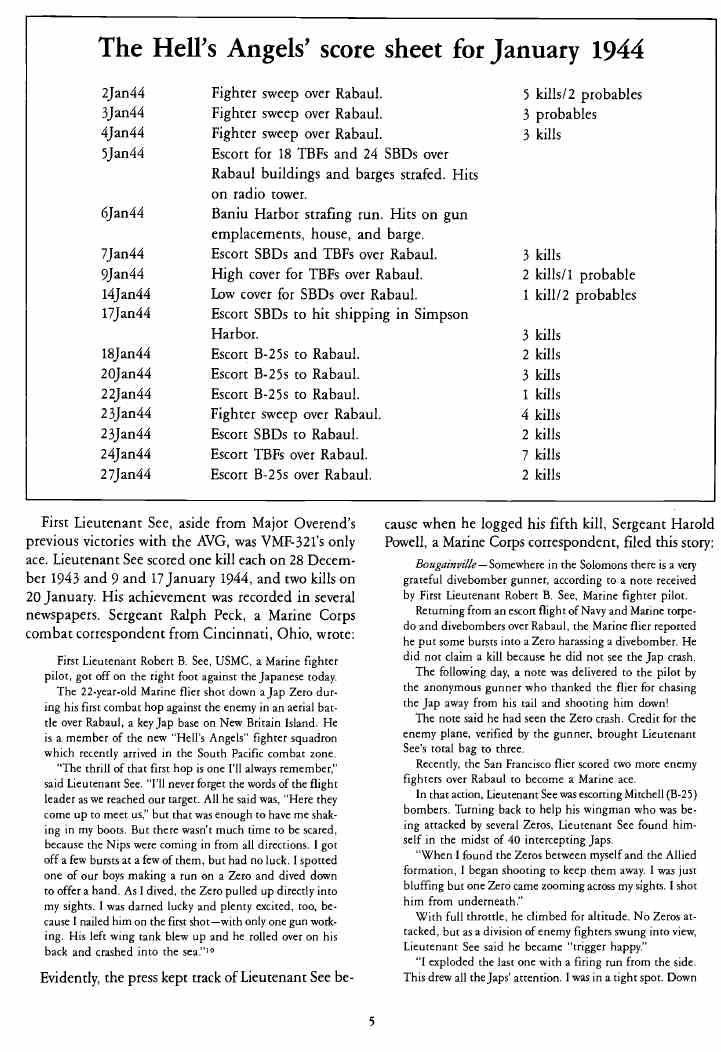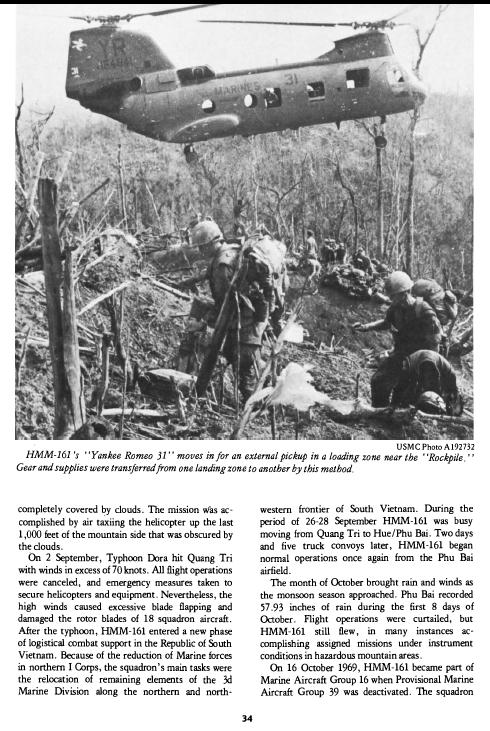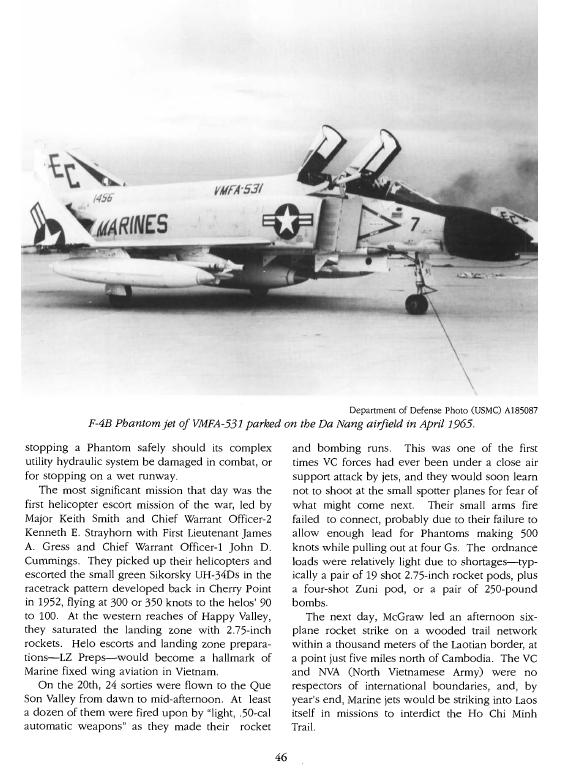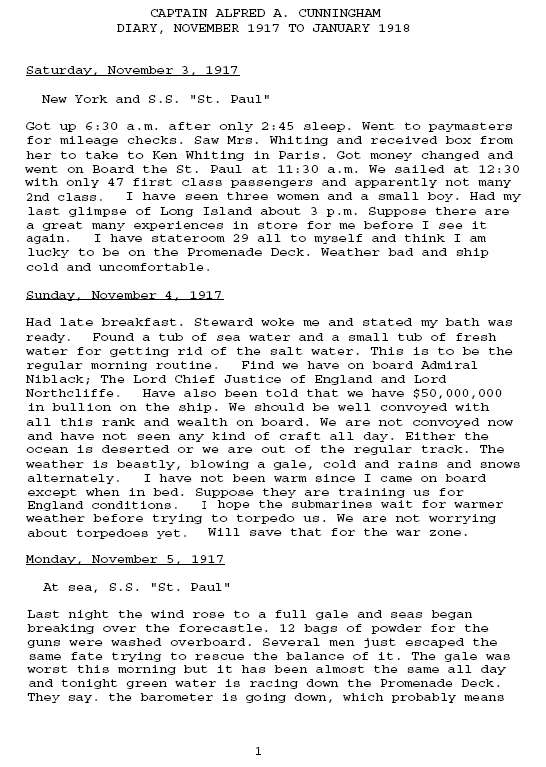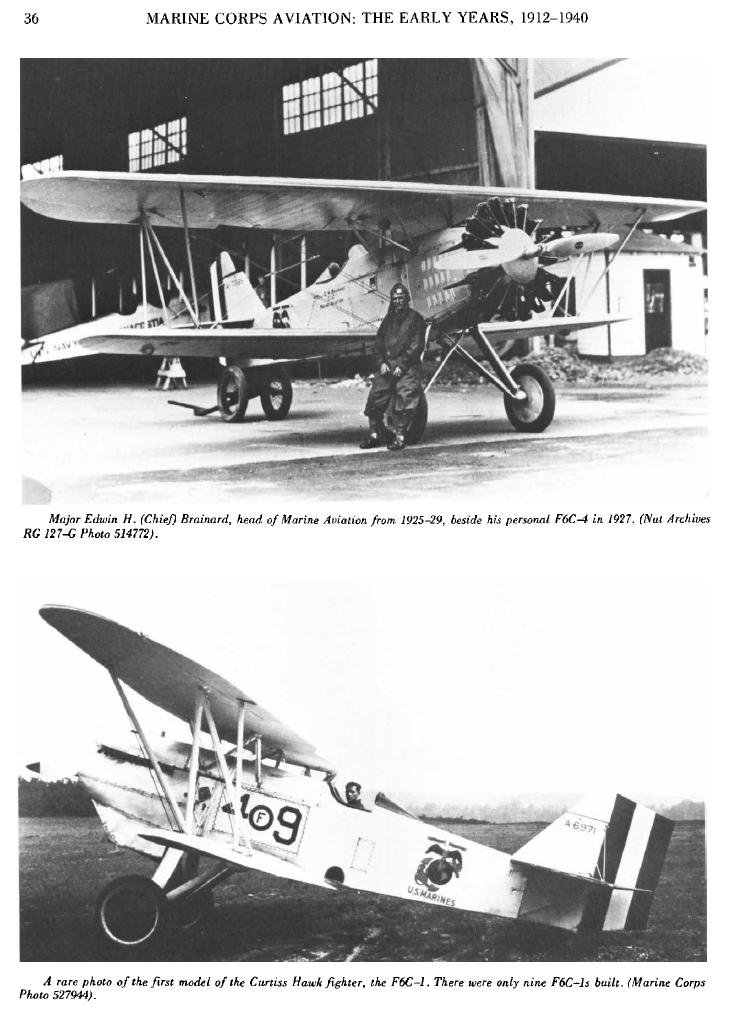|
UNITED STATES MARINE CORPS
AVIATION 1912-2001 OFFICIAL HISTORY VOLUMES
1,090 pages of official Marine Corps history covering Marine Corps aviation from 1912 to 2001, composed of 14 volumes.
Volumes include:
MARINE CORPS AVIATION: THE EARLY YEARS 1912-1940
A 117 page, 1977 monograph by the History and Museums Division Headquarters, U.S. Marine Corps. This history of Marine aviation from 1912 to 1940 describes the efforts of Marines to secure their own air arm and recounts the early development of the Marine air-ground team. The story is draw n from official reports, documents, and personal correspondence, as well as from published historical works. It also draws heavily upon the transcribed reminiscences of notable Marine aviators collected and preserved by the Oral History Section of the History and Museums Division.
Chapters include:
Chapter 1. THE BEGINNINGS, 19121917, Naval Aviators in a Different Uniform, 19121913, Slow Steps Forward, 19131917 Marine Aviation Begins to Organize, 1917.
Chapter 2. MARINE AVIATION TN WORLD WAR 1, 19171918, Marine Aviators Mobilize, The 1st Aeronautic Company in the Azores, Beginnings of the 1st Marine Aviation Force, Marine Aviation Expands, The 1st Marine Aviation Force in France.
Chapter 3. ADVANCE TOWARD MATURITY, 19191929, Battle for Survival, 19191920, Organization and Mission, 19201929, Men and Machines, 19201929, Maneuvers, Long-Distance Flights, and Air Races, Operations in Haiti, the Dominican Republic, and Guam, China and Nicaragua, A Decade of Achievement.
Chapter 4. MARINE AVIATION COMES OF AGE, 19301940Impact of the Great Depression, Aviation and the Fleet Marine Force, Men and Machines, 19301940, Operations, 19301940, Conclusion: Marine Corps Aviation, 19121940.
MARINES AND HELICOPTERS 1946 - 1962
This 123 page, 1978 history, which traces the development of helicopters in the Marine Corps from 1946 to 1962, covers the planning of a handful of Marine officers who conceived of the vertical assault concept in amphibious operations at a time when suitable aircraft to make it work did not exist. The story of the subsequent struggle to procure and develop those aircraft, to refine a doctrine for their employment, and to familiarize the Marine Corps with their use.
The documentary basis for this monograph was primarily the official records of the Marine Corps and Navy Department, but considerable use was made of interviews and correspondence with key individuals involved in all phases of helicopter development.
Chapter include:
INTRODUCTION: Early Helicopter Developments, Initial Procurements And Designs, HRP-1 Development, HJP-1 Utility and Rescue Evaluation, HTL-1 Trainer, Designs For The Future, Helicopter Applications, Early Outlook.
CHAPTER 1. THE ADVENT: The Quest for an Alternative, A Helicopter Program For 1947, Assault Helicopter Characteristics And Design Problems.
CHAPTER 2. CONCEPT DEVELOPMENT: Commissioning and Operations of HMX-1, Initial Request For An Observation Helicopter, Operation PACKARD II, Publication Of The New Concept-PHIB, Other Significant Demonstrations And Operations By HMX-1.
CHAPTER 3. A REVITALIZED HELICOPTER PROGRAM: The Marine Corps Board, The Second Attempt To Procure A 3,000-Pound Payload Helicopter, The First Six Months Of 1950, Further Action By The Marine Corps Board, Initial Interest In The Kaman Helicopter, The Beginning In Retrospect.
CHAPTER 4. KOREAN WAR EXPANSION: Plans For An Accelerated Helicopter Program, Awarding Of The First Assault Transport Helicopter Contract, Related Events To The Expanded Helicopter Program, Tactics And Techniques Board Report Of 1951, Activation Of The 3d Marine Aircraft Wing, 1952 Aircraft Plans For The Future, Peripheral Aspects Of The
Period.
CHAPTER 5. SEEKING A NEW ORDER OF MOBILITY: A Concept for Future Amphibious Operations, Initial Determination of the Marine Corps Helicopter Aircraft Requirements, The Advanced Research Group, Landing Force Bulletin Number 17, The Smith Board, A Reduced HR25 Program.
CHAPTER 6. A PERIOD OF REEVALUATIONA MODERATE CAPABILITY: HQMC Study Number 3-1956, Marine Corps Aviation 5-Year Program, 19571962, The Hogaboom Board Of 1956, Forced Reduction, Growth And Changes Under Austere Conditions 19561962, Implementation Of The Hogaboom Board Recommendations.
CHAPTER 7. BEGINNING THE TRANSITION TO TURBINE-POWERED HELICOPTERS: Choosing A Heavy Helicopter, The Selection Of An Assault Support Helicopter, The Essex Class Carrier As An Interim LPH, One-Man Helicopters, The Flying Crane Helicopter, Robot (Remotely Controlled) Helicopters, VTOL Aircraft As They Pertain To Helicopters.
MARINES AND HELICOPTERS 1962-1973
This 275 page, 1978 history by the History and Museums Division Headquarters, U.S. Marine Corps, traces the development of helicopters in the Marine Corps from 1962 to 1973. In the period covered by this volume, the Marines at last acquired helicopters fully capable of carrying out an amphibious vertical assault, and they further elaborated their helicopter doctrines and tactics.
The documentary basis for this monograph was primarily the official records of the Marine Corps and Navy Department, but considerable use was made of interviews and correspondence with key individuals involved in al phases of helicopter development. Lieutenant Colonel William R. Fails, USMC (Ret), the author, Marine Corps aviation experience includes tours with fixed-wing fighter and attack squadrons, as a flight instructor, and as a helicopter pilot and aircraft maintenance officer. He served in Vietnam in 1965-66 with HMM-263 and again in 1970-71 as S-4 of MAG-16 and facility manager for Marble Mountain Airfield.
A HISTORY OF MARINE FIGHTER ATTACK SQUADRON 321
A 60 page, 1991 monograph by the History and Museums Division Headquarters, U.S. Marine Corps.
This volume highlights the significant activities of Marine Fighter Attack Squadron 321 during its more than 40 years of active and Reserve service. Since its commissioning in February 1943, the squadron has evolved from a group of inexperienced wartime pilots flying F4U Corsairs to today's Reservists in their F/A-18 Hornets. During World War II, Marine Fighting Squadron (VMF) 321 enjoyed a brief, but successful, career as one of the many such units which contributed to the Allied victory in the Pacific. However, where many of its sister squadrons eventually disappeared during the postwar demobilization, VMF-321 was reborn at Naval Station Anacostia on the outskirts of the nation's capital as the first Marine Air Reserve fighter squadron.
Chapters include: Formation and World War II Combat Operations, Rebirth as a Reserve Squadron, Korea: Impact and Individual Member Service, Anacostia to Andrews: Props to Jets, The Phantom Era, The 1980s and Beyond. Appendixes include a chronology, a list of commanding officers, honors, and squadron insignias.
A HISTORY OF MARINE ATTACK SQUADRON 531
A 112 page, 2001, monograph by the History and Museums Division Headquarters, U.S. Marine Corps. This history traces a half century of active service by Marine Fighter Attack Squadron 531. It was a unique squadron because its history demonstrates the complete evolution from night fighter to all-weather fighter to fighter-attack. Its earliest days placed the Marine Corps as the pioneer of all the military Services in night fighting.
From the primitive converted civilian airliner, the PV-1, to the Marine Corps fighter, the F/A-18, the "Grey Ghosts" evolved as their tactics changed. Their service covered the globe: Cherry Point on the East Coast, Texas, El Toro on the West Coast, the Southwest Pacific, Iwakuni in Japan, Cubi Point in the Philippines, Korea, Vietnam, the Indian Ocean, and the Caribbean. Colonel Charles J. Quilter II provided a large majority of the text. He retired from the Marine Corps Reserve in 1994 after 34 years of service. He studied in Japan and graduated from the University of California, Berkeley, with a degree in East Asian History. Commissioned in June 1964, he gained his aviator wings in November 1965.
He then joined Marine Fighter Attack Squadron 531 (VMFA-531) at Cherry Point, North Carolina, as an F4-B Phantom pilot and deployed to Puerto Rico at the end of the Dominican Republic crisis in 1966. He flew 252 combat missions with VMFA-323 from Chu Lai, Vietnam, in 1967-68 serving as a flight commander. He did a second tour with the "Grey Ghosts" of VMFA-531 as its operations officer at El Toro, California, in 1968-70, where he was also designated as one of the Marine Corps' first dissimilar air combat training instructors, flying as an adversary pilot in A-4 aircraft.
His assignments in the Reserve included command of VMFA-134 at El Toro in 1984-86 and Mobilization Training Unit (History) DC-7 in 1989-93 at the Marine Corps Historical Center in Washington, D.C. In 1990, he led a detachment to Southwest Asia during the Persian Gulf Conflict of 1990-91, and served as Command Historian of the I Marine Expeditionary Force in charge of the Corps' historical collection effort.
Chapter include: 1942: Getting Started-Washington and Cherry Point, Growing Pains at Cherry Point, To the Solomons and War, February 1944 Climax, Tigercats in Texas and China, Postwar Survival at Cherry Point, Enter the Jets: The Skyknight, Skyrays to WestPac, Phantoms and MiGs Over the Florida Straits, Phantoms to WestPac, Combat in Vietnam, Cherry Point Again: Rebuilding and Training, Rebirth and Renaissance at El Toro, To the Mediterranean on the Forrestal, El Toro Home Interlude, The Indian Ocean on the Coral Sea, El Toro Again: Enter the Hornets and Back to WestPac.
Appendixes include a chronology, a list of commanding officers, honors, citations, squadron aircrafts, and squadron insignias.
A HISTORY OF MARINE FIGHTER ATTACK SQUADRON 312
A 40 page, 1978 monograph by the History and Museums Division Headquarters, U.S. Marine Corps. The history of Marine Fighter Attack Squadron 312 is a narrative account of the famed Checkerboard squadron in action. VMFA-312 saw its first action in the skies over Okinawa during World War II, and later the squadron was used extensively throughout the Korean conflict. The Checkerboards were one of the first Marine squadrons in Vietnam
Chapters include: Organization and Training, Okinawa: Action at Last, Reorganization and More Training, Korea, New Aircraft and New Alerts, The Vietnam Era and Subsequent Operations
A HISTORY OF MARINE ATTACK SQUADRON 223
A 52 page, 1978 monograph by the History and Museums Division Headquarters, U.S. Marine Corps. Marine Attack Squadron 223 has a long and illustrious career of outstanding accomplishments and has produced some of the finest aviators in the history of the Marine Corps. This work sketches the achievements and personalities that have made VMA-22 3 such an outstanding Marine squadron
The author, Captain Brett A. Jones, was a member of VMA-223 from February 1974 to July 1975 and worked closely with the History and Museums staff to produce this monograph.
Chapters include: From Birth to Guadalcanal, From the Solomons to Okinawa, A Force in Readiness: 1946-1950, Entering the Jet Age, Vietnam, The Return to Garrison.
A HISTORY OF MARINE OBSERVATION SQUADRON SIX
An 88 page, 1982 monograph by the History and Museums Division Headquarters, U.S. Marine Corps.
Marine Observation Squadron 6 distinguished itself throughout a period which spanned nearly five decades and three major conflicts, but its most significant contribution to Marine aviation was its pioneering use of helicopters in combat. Marine Observation Squadron 6's wide variety of experiences closely parallels the larger story of Marine aviation. From the 1920s through the Vietnam era, VMO-6 provided the kind of outstanding air support Marines have come to expect.
Chapter include: The Early Years, World War II and China Service, Korea and the Advent of Helicopters, Pendleton Once More, Combat: Vietnam, Tenancy on Okinawa and commissioning. Appendixes include a chronology, a list of commanding officers, honors, citations, and squadron insignias.
A HISTORY OF MARINE MEDIUM HELICOPTER SQUADRON 161
A 60 page, 1978 monograph by the History and Museums Division Headquarters, U.S. Marine Corps. The HMM-161 is one of the oldest helicopter squadrons in the Marine Corps. The squadron is noted for its work in developing the helicopter as a tactical tool for the Marine Corps. The history of HMM-161 was prepared by a former member of the squadron, Lieutenant Colonel Gary W. Parker, who joined HMM-161 in Hawaii in May 1963 and remained with the squadron when it went to Vietnam in 1965 with the 1st Marine Brigade. On his second tour of duty in Vietnam in 1968 he was again assigned to HMM-161.
SILK CHUTES AND HARD FIGHTING: U.S. MARINE CORPS PARACHUTE UNITS IN WORLD WAR II
A 50 page, 1999 monograph by the History and Museums Division Headquarters, U.S. Marine Corps, covering the development, deployment, and eventual demise of Marine parachute units during World War II. This monograph covers the Marine Corps' flirtation with airborne operations during World War II, relying heavily on the relevant operational and administrative records of the Marine Corps held by the National Archives in Washington, D.C. and College Park, Maryland, and the Washington National Records Center in Suitland, Maryland. The various offices of the Marine Corps Historical Center yielded additional primary materials to the author.
MARINE FLYER IN FRANCE THE DIARY OF CAPTAIN ALRED A. CUNNINGHAM NOVEMBER1917-JANAURY 1918
A 53 page, 1999 monograph by the History and Museums Division Headquarters, U.S. Marine Corps, recounting the experiences and impressions of Captain Alfred Austell Cunningham, the first Marine aviator, during his tour of British and French aviation facilities in November and December 1917. The document reveals much about the character and personality of a notable Marine and gives a view of wartime England and France as seen through his eyes.
During November and December 1917, Captain Alfred A. Cunningham, the first Marine Corps aviator, traveling under orders from Major General Commandant George Barnett, toured the battlefronts and flying fields of France to observe Allied air operations and training. In 1917, Cunningham was the Marine Corps's de facto director of aviation. He had joined the Corps in 1909 and as a-first lieutenant stationed at the Philadelphia Navy Yard made his first experimental flights in a crude airplane which he rented at his own expense. In May 1912, the Marine Corps sent Cunningham to Annapolis for Navy pilot training. He soloed early in August of that same year and on 5 March 1913 was designated a naval aviator. During the next four years, as Marine aviation slowly grew, Cunningham, joined by a few other far-sighted Marines, continually worked and argued to promote its interests. On 26 February 1917, Cunningham received orders to organize at the Philadelphia Navy Yard the Marines' first tactical aviation unit, called initially the Marine Corps Aeronautic Company. At this time, Marine aviation muster rolls carried the names of seven aviators and 43-ground personnel.
U.S. MARINE CORPS AVIATION
A brief, 48 page, 1978 history, published by the Deputy Chief of Naval Operations (Air Warfare) and the Commander, Naval Air Systems Command.
Topics include: The Early Years: 1912-1941, The First Marine Aviation Force, First Marine Aviation Force in France, Survival: 1919-1920, Expansion and Training, World War II, Wake Island, Battle of Midway, The Road Back, The Solomons Campaign, Central Pacific Operations, The Philippines, Okinawa, The Occupation of Japan and Demobilization, Post-WW II Operations, Korean War, Chosin Reservoir, Technological Development, Southeast Asia Involvement and Pressing on Toward the 1980s.
FRANK McCUTCHEON: CRUSADER FOR U. S. MARINE CORPS CLOSE AIR SUPPORT, INNOVATOR OF COMMAND AND CONTROL
A 54 page, 2002, United States Marine Corps, Command and Staff College, Marine Corps University thesis by Julie M. La Point, Lieutenant Commander, United States Navy.
The purpose of this work is to highlight LtCol Keith B. McCutcheon, USMC and his contributions to CAS, specifically in the area of command and control. The first organized use of USMC Close Air Support (CAS) for ground troops originated in the Philippines during World War II. Under the direction of LtCol Keith B. McCutcheon, Marine aviation provided close air support (CAS) for the Army in the Philippines in 1945. McCutcheon's perseverance and innovative ideas in the area of command and control laid the foundation for all close air support efforts in the Pacific and became an integral part of the Marine air-ground team concept that makes the Marine Corps unique today.
THE MARINE AIR COMMAND AND CONTROL SYSTEM: AN HISTORICAL PERSPECTIVE
A 72 page, 1994 Air War College thesis by Richard J. Martin Jr., Lieutenant Colonel, USMC.
From abstract: Although much has been written about the history of Marine aviation and the Marine ground units it supports, there has been very little written about another important ingredient to this Marine air-ground team, the "glue" that holds it together, the Marine Air Command and Control System (MACCS). The MACCS evolved out of necessity. Along with the modernization of Marine aviation, and its associated complexities, came the need for a system that could provide for air command and control. As is the case with most man-made phenomena, this air command and control system did not evolve overnight. It came about gradually. Its growth was periodically accelerated by wartime demand for the integrated control of ever-increasing numbers of aircraft and missiles (along with their resultant sharing of airspace) and the increasing demand for aviation in direct support of ground forces. The MACCS has had a long and colorful history and has played a pivotal role in keeping Marine air in support of Marines.
As a finding aid for this title, all convertible text in the documents have been transcribed and embedded under the page image as text. All text capable of being converted can be searched.
|
